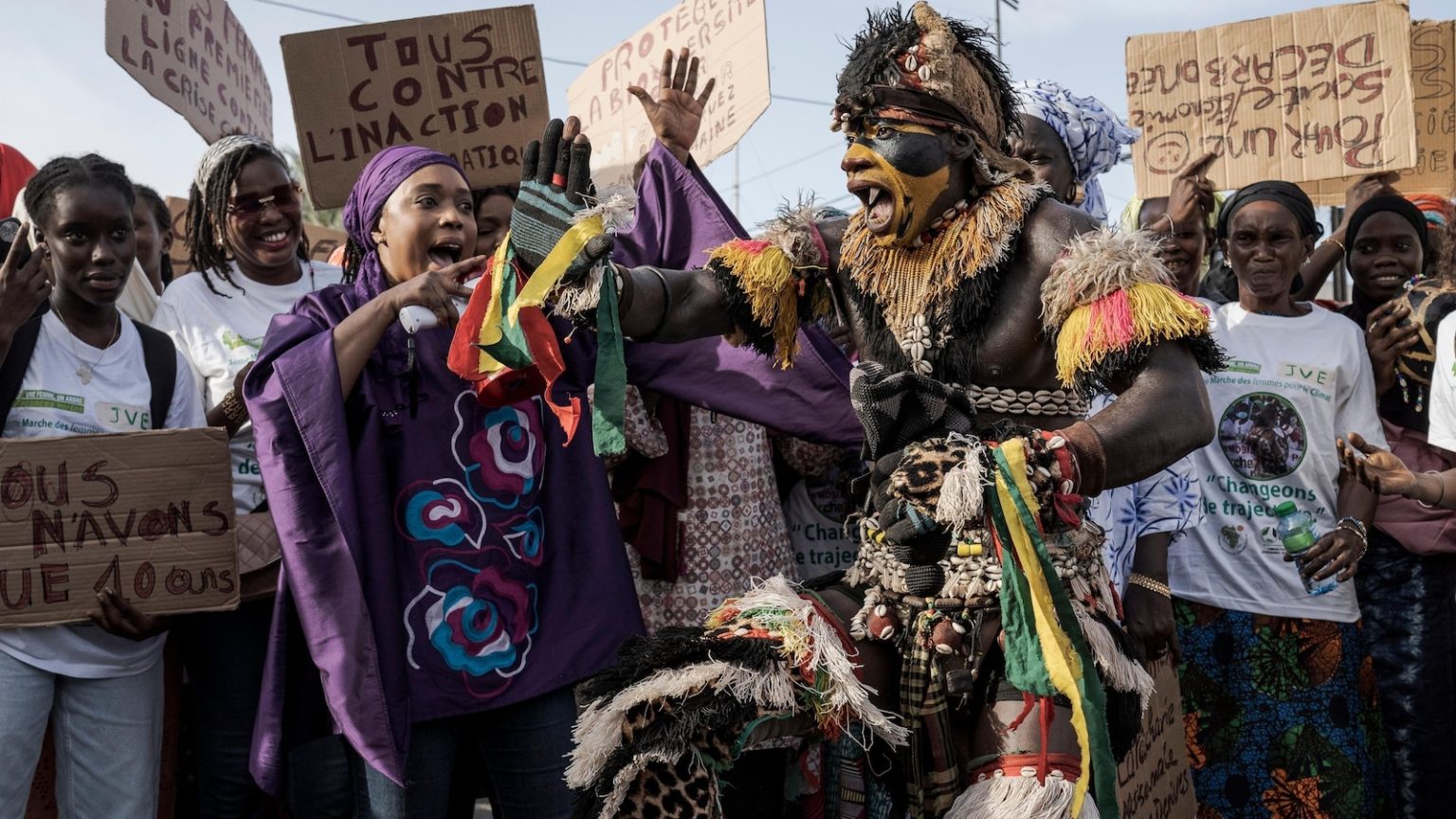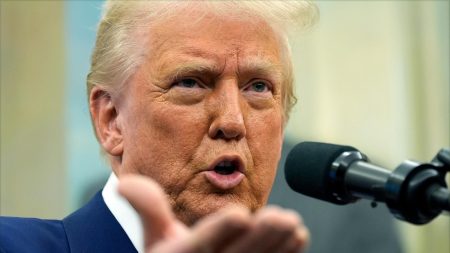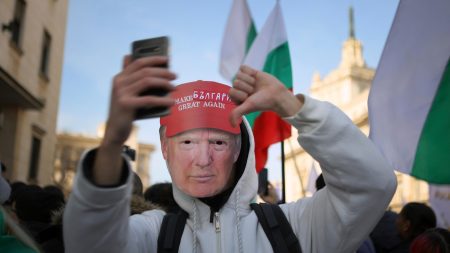The Plight of Lions in Senegal’s Niokolo-Koba National Park
The morning sun casts its golden rays over the dense canopy of Senegal’s Niokolo-Koba National Park, a sanctuary teeming with life. Sgt. Abdou Diouf and his team of rangers move stealthily through the forest, their guns at the ready as they scan for signs of poachers. Today, however, the only hunters seem to be the lions themselves, whose fresh tracks are etched into the sand. Niokolo-Koba, spanning over 3,500 square miles, is the last refuge for lions in Senegal, but even here, these majestic creatures find little peace. Despite conservation efforts, the illegal trade of lion and leopard parts continues to thrive, driven by a deep-rooted belief in the mystical powers of "gris-gris" talismans.
Lions, critically endangered in West Africa, are under constant threat. Niokolo-Koba’s lion population has seen some recovery, doubling to around 35 since 2017, but the loss of two lions annually remains unsustainable. The only other lions in West Africa are found in the W-Arly-Pendjari Complex, a transboundary region shared by Benin, Burkina Faso, and Niger, where fewer than 250 adults remain. The demand for lion parts is fueled by the belief that these talismans, crafted from animal skin and infused with Quranic verses, possess protective and healing powers.
The Cultural Significance of Gris-Gris in Senegal
Gris-gris are deeply ingrained in Senegalese culture, blending traditional African spirituality with Islamic influences. These talismans are believed to harness the power of nature and animals to protect, heal, or even harm. Dr. Cheikh Babou, a historian at the University of Pennsylvania, explains that with the arrival of Islam in West Africa in the eighth century, gris-gris evolved into hybrid objects, combining Quranic verses with animal parts. "People started to drink the Quran, to wear the Quran – in the same way that they did with animals," he says.
In Senegal, gris-gris are everywhere. From police officers seeking protection to wrestlers enhancing their strength, and politicians boosting their influence, these talismans are integral to daily life. Ordinary citizens wear them to ward off curses, often rooted in jealousy or rivalry. A visit to a market stall in Tambacounda reveals the extent of this belief. A man named Ibrahim, who asked to remain anonymous, wears multiple amulets made from hyena, honey badger, and even lion parts. He claims these talismans were prescribed by a marabout after he fell ill, allegedly due to a spell cast by someone envious of his success. "Here in Africa, people are very mean," he says. "If they see you succeed, they will go to the marabout."
This belief system reflects a broader cultural dynamic. In traditional African societies, wealth and success are expected to be shared. Those who hoard wealth or refuse to share it are often seen as breaking communal norms, making them targets of envy and suspicion. A gris-gris can offer protection from such perceived threats, reinforcing its importance in Senegalese life.
The Alarming Rise of the Illegal Trade
The demand for lion parts has given rise to a thriving black market. According to a report by Panthera, a wild cat conservation group, lion and leopard parts are sold in 80% of markets surveyed, with 63% of artisans reporting increased sales in recent years. Lion skins, in particular, are highly prized. As Senegal’s national emblem, the lion is a symbol of pride and power, appearing on everything from the country’s coat of arms to billboards and the national soccer team, the "Lions of Teranga." "You cannot prevent a Senegalese person from believing that a lion skin has some kind of power," says Daouda Ngom, Senegal’s environment minister.
This demand has fueled a sophisticated smuggling network that spans Africa. Skins sourced from East and Southern Africa are transported through the Sahel region, evading checkpoints and border security to reach Senegalese markets. Between 2019 and 2024, authorities confiscated 40 lion and leopard skins and arrested 40 individuals for trafficking. However, as Cécile Bloch of the EAGLE Network notes, these seizures represent only a fraction of the actual trade. Traffickers have become increasingly sophisticated, cutting lion skins into small pieces to avoid detection and selling them discreetly in local markets.
Conservation Efforts in Niokolo-Koba National Park
In the face of these challenges, Niokolo-Koba National Park has partnered with Panthera to strengthen its anti-poaching efforts. Since 2016, Panthera has tripled the park’s security force from 20 to 60 rangers, equipping them with vehicles, gear, and advanced infrastructure such as camera traps, roads, and an airstrip. These measures have helped protect the park’s lion population, which had been on the brink of collapse. Ranger Sgt. Abdou Diouf and his team are on the front lines of this battle, risking their lives daily to patrol the park’s vast terrain. "Sometimes the poachers fire at you," Diouf says, underscoring the dangers they face.
Despite these efforts, the root causes of the crisis remain unaddressed. The trade in lion parts is driven by the prescriptions of marabouts, religious leaders whose influence is unparalleled in Senegalese society. Many see no contradiction between their use of gris-gris and the need to protect lions. "I prescribe the gris-gris to help people get better," says Cheikh Camara, a marabout interviewed by The Associated Press. "It’s the poaching that’s making the lions go extinct." This disconnect highlights the complexity of the issue, which is as much about culture as it is about conservation.
The uphill Battle Against Poaching and Wildlife Trafficking
The fight to protect Senegal’s lions is hampered by weak laws and lenient penalties. The country’s hunting and wildlife laws, unchanged since 1986, fail to deter poachers and traffickers. Recent cases illustrate this: a Burkinabe man found with leopard and lion parts was sentenced to just one month in prison, while a Malian trafficker received the same penalty for smuggling leopard skins. "The sentences are too short," says Ndeye Seck, head of litigation and armament for the parks department. "We would like to see the hunting and protection of wildlife codes updated."
The economic incentives for traffickers are another hurdle. A small piece of lion skin can fetch around $3, while a belt made from the same material can sell for nearly $80. Entire lion skins can command over $1,900, according to Panthera’s report. These profits make the illegal trade enticing, especially in a region where poverty and unemployment are widespread.
Toward a Sustainable Future
The battle to save Senegal’s lions is as much about changing hearts and minds as it is about enforcing laws. Dr. Cheikh Babou emphasizes that cultural reform is essential. "Culture is very powerful," he says. "Until you can convince people that there are more effective tools to achieve their goals, then they will continue to believe in it." This means addressing the deeply entrenched belief in gris-gris and finding alternative solutions that resonate with Senegalese values.
The environment minister, Daouda Ngom, has made tougher laws a priority, but lasting change will require a broader societal shift. Panthera’s efforts to engage with marabouts and communities are a step in the right direction. By fostering dialogue and promoting sustainable alternatives, it may be possible to reduce the demand for lion parts without alienating those who rely on gris-gris for their livelihoods.
In the end, the survival of Senegal’s lions depends on a delicate balance of cultural sensitivity, legal enforcement, and community engagement. As the sun sets over Niokolo-Koba, the rangers’ work is far from over. They remain vigilant, knowing that the fight to protect these majestic creatures is not just about preserving wildlife – it’s about preserving a piece of Senegal’s soul.















